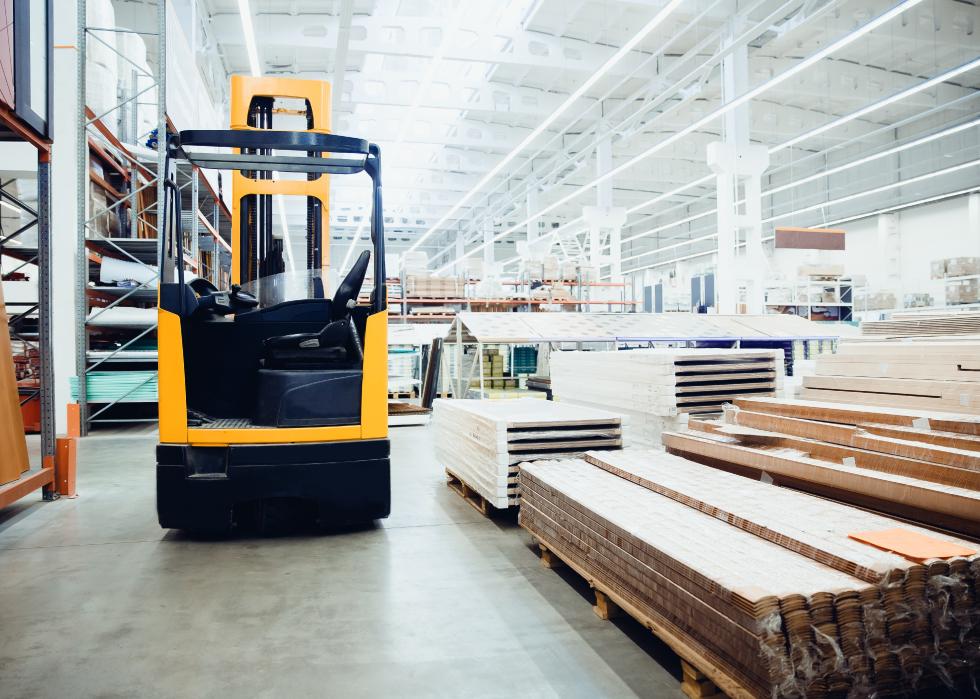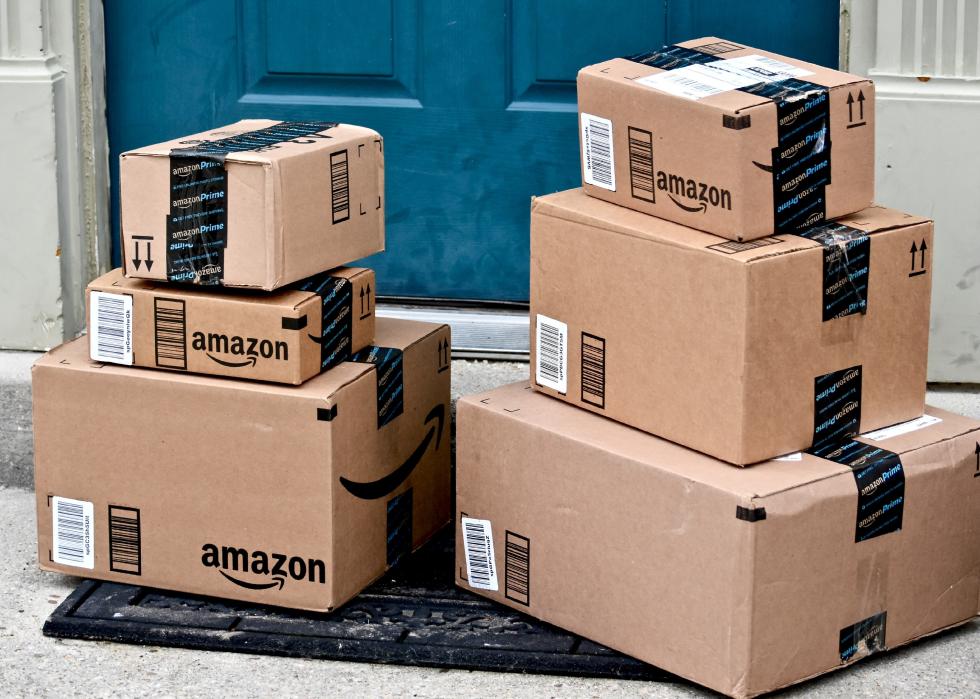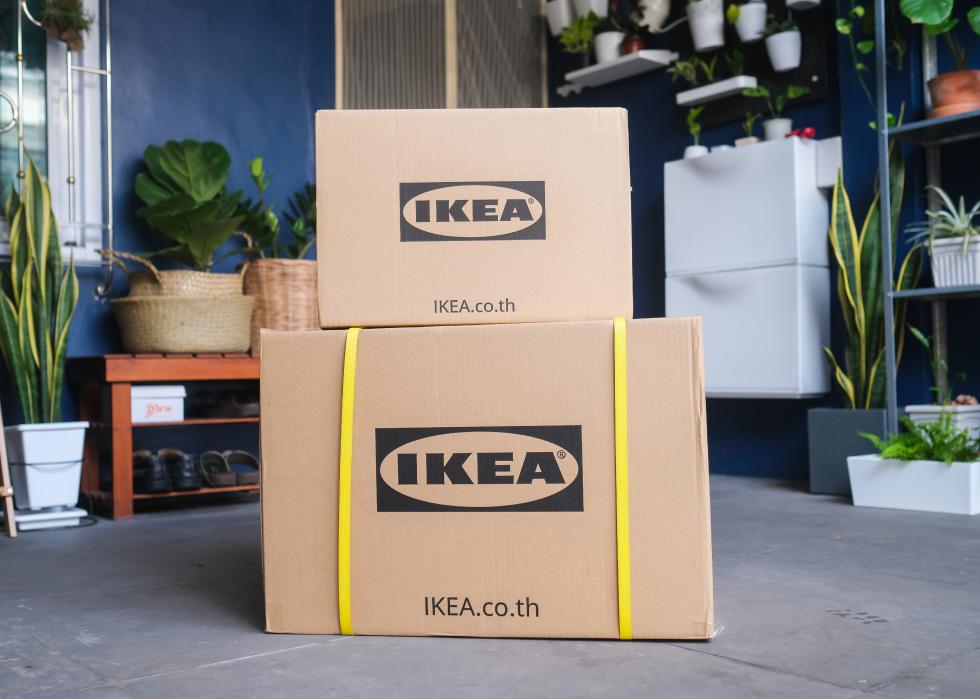
Industries that have seen the biggest online sales growth
This story originally appeared on Giving Assistant and was produced and distributed in partnership with Stacker Studio.
Industries that have seen the biggest online sales growth
Close your eyes and picture the internet of 2005 in your mind's eye. It's far smaller, there's barely any Facebook, plus Twitter and Instagram don't exist yet. But were you shopping online? That's the key question.
Yes, sites like Amazon were enormous even in 2005, but the retail climate online was very different than today. Indeed, many of the industries on this list had the online portion far below 1% of their total sales in 2005.
Giving Assistant analyzed data from the Annual Retail Trade Survey by the U.S. Census Bureau (released in January 2022) to rank the industries that have had the biggest online sales growth over 15 years between 2005 and 2020. This survey studies retail sales across virtually every industry, broken down into broader categories. The U.S. Census Bureau gathers information for dozens of surveys, even during years that do not cap decades.
Gyms, hair and nail salons plus other personal care businesses, gas stations, and motor vehicle and auto parts dealers were excluded from the analysis, as complete Census data was not available for these types of businesses in recent years. But the industries that do report these sales in the survey paint a picture of a rapidly changing world when it comes to online sales, with $815 billion in online sales during 2020. That represents a nearly 800% increase over the Census-measured data for 2005.

#8. Electronics and appliance
- Estimated increase in online sales from 2005 to 2020: 105%
- Estimated online sales (2020): $2.3 billion
- Online sales as a share of total industry spending (2020): 3%
Electronics and appliances, as a category, includes everything from household microwave ovens to cutting-edge gaming computers. This industry has experienced surprisingly little online sales growth during the key years between 2005 and 2020, with just 105%, so about doubling over 15 years. At the same time, it's not surprising to imagine that people still want to look at and touch appliances in person before they buy. And even while more than doubling since 2005, online sales are still a tiny 3% of the total consumer appliance sales.

#7. Building material, garden equipment, and supplies dealers
- Estimated increase in online sales from 2005 to 2020: 324%
- Estimated online sales (2020): $2.2 billion
- Online sales as a share of total industry spending (2020): 0.5%
This category also includes paint and hardware stores. The industry grew more than 300% between 2005 and 2020, but the final market share is still a tiny 0.5%. This indicates that virtually no one in these industries is buying online, although that could have changed during the pandemic, when do-it-yourself home improvement projects took off. And it makes sense, because many of those buying building supplies are doing so in real time for ongoing projects; they don't want to wait or pay to ship heavy goods.

#6. Miscellaneous store retailers
- Estimated increase in online sales from 2005 to 2020: 489%
- Estimated online sales (2020): $6.3 billion
- Online sales as a share of total industry spending (2020): 5%
"Miscellaneous" as a category includes a wide mix of things: florists, office supply stores, souvenir shops, and thrift or consignment stores. Their growth of online sales is nearly 500%, which is impressive, bringing the total industry share up to 5%. Thrift stores are underrepresented online, except for specialty retailers like designer clothing resellers or Goodwill's electronics outlet. But florists online go way back to at least 1995—the year that 1-800-FLOWERS bought their website domain.

#5. Sporting goods, hobby, musical instrument, and book stores
- Estimated increase in online sales from 2005 to 2020: 616%
- Estimated online sales (2020): $5.4 billion
- Online sales as a share of total industry spending (2020): 6%
It's hard to remember now, but Amazon began selling books way back in the 1990s. In 2005, they sold $8 billion worth of books and other goods. It's still impressive that the odd industry grouping of sports, hobbies, musical instruments, and books jumped over 600% between 2005 and 2020. Even in the high-speed information age, people still need soccer cleats and want Chuck Norris bobbleheads.

#4. Nonstore retailers (including electronic shopping and mail-order houses)
- Estimated increase in online sales from 2005 to 2020: 917%
- Estimated online sales (2020): $705.7 billion
- Online sales as a share of total industry spending (2020): 72%
"Nonstore retailers" is a very literal category, including brands like QVC, which has three retail locations—two in Pennsylvania and one in Florida. This category also includes mail-order brands like Publishers Clearing House and fuel dealers, which are essentially direct sellers of hydrocarbons like propane. Soda and candy vending machines are also included in this category.
It may sound strange that "nonstores" have increased their online sales by over 900%, but these very real businesses have likely had one of the easiest transitions to online sales during the pandemic, as they were already accustomed to dealing remotely and processing transactions from afar. These businesses total online sales reached 72% of the industry by 2020, showing how quickly online ordering has supplanted traditional mail and phone orders.

#3. Furniture and home furnishings stores
- Estimated increase in online sales from 2005 to 2020: 923%
- Estimated online sales (2020): $3.6 billion
- Online sales as a share of total industry spending (2020): 3%
Furniture and home furnishings stores have one of the lowest online sales market shares on the list with just 3%—and that's including an increase of more than 900% between 2005 and 2020. From that perspective, even that 3% is hard won from customers who strongly prefer to shop in person.
It's likely this number will still continue to grow, especially as virtual reality and augmented reality allow more customers to browse remotely and "try out" furniture, visualizing how it can fit in their living rooms. This category also includes stores dedicated to tile, carpeting, and other forms of flooring.

#2. Clothing and clothing accessory stores
- Estimated increase in online sales from 2005 to 2020: 1,193%
- Estimated online sales (2020): $16 billion
- Online sales as a share of total industry spending (2020): 8%
Yes, it's no surprise to see clothing stores near the top of this list with nearly 1,200% growth from 2005 to 2020. But the low total share, still just 8%, highlights that the vast majority of people still visit brick-and-mortar stores to buy clothes, shoes, accessories, and jewelry.
Augmented reality may help the online share continue to grow, letting customers try clothes and jewelry virtually from their homes. Online sales will continue to rely on markets that are more niche or specialized than mainstream clothing stores typically serve, such as big and tall and pregnancy or nursing clothes.

#1. Food and beverage stores
- Estimated increase in online sales from 2005 to 2020: 4,823%
- Estimated online sales (2020): $23.3 billion
- Online sales as a share of total industry spending (2020): 3%
As a category, food and beverage stores include grocery stores as well as specialty businesses like butchers, bakeries, and liquor stores. Yes, these sales grew by an astonishing near 5,000% (or 50 times), but the resulting number is still a tiny 3% of overall sales. Grocery stores made a dramatic pivot during the pandemic to begin allowing more online and app orders as well as curbside customer pickup. The average grocery store makes just 2.2% profit, meaning this swift pivot likely saved many stores from bankruptcy during the pandemic.



